Its been a minute since last posting, my apologies. But I have a few decent excuses. D.U.S. has since relocated from California to Providence RI....
Read MoreSacred Groves
A landscape always exists in an ephemeral state in comparison to most architecture. Much of its makeup often being organic, there is an expiration date unless certain remediations take place....
Read MoreTransparency
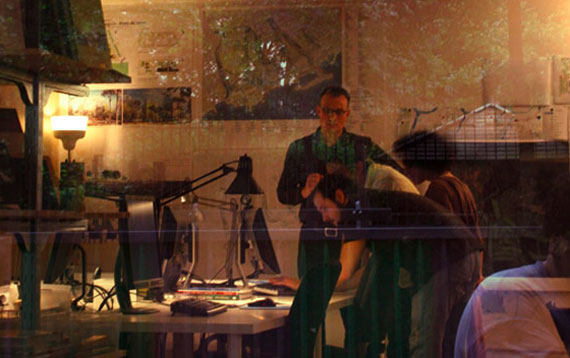 [Window into the OLM studio]
[Window into the OLM studio]
It might be fair to say that for those unfamiliar with landscape architecture the idea of "what we do" is often obscure, and understandably so, as we've found, many LA's aren't quite sure what they do either.
That's why its so important to create a transparency from the studio to the outside world, to give everyone willing an inclusive look and understanding that design is a process and that landscape is not an afterthought. Better understanding may lead to a greater want, and thus, more work.
Unlike many design shops such as IDEO and Adaptive Path, landscape/architecture studios have been rarely successful in exposing who they are and how they do what they do. Instead so often we get the ubiquitous photo of three or four staff members leaned over a table and drawing "engaged" in the process. Accompanying this might be a descriptive paragraph with words thrown in such as "listening" and "inspiring" but shows little as to how that's done. With easily accessible technology, I think we can be more creative.
These thoughts came after viewing a video by The Office of Lanscape Morphology, a landscape architecture studio in Paris, which simply introduces the cast of staff and shows them in their native habitat, emerged in the process of design. Their site is a bit clunky, but I think the video is a particular fine example of how new media can open studio windows to the public eye.
A Central Central Park West
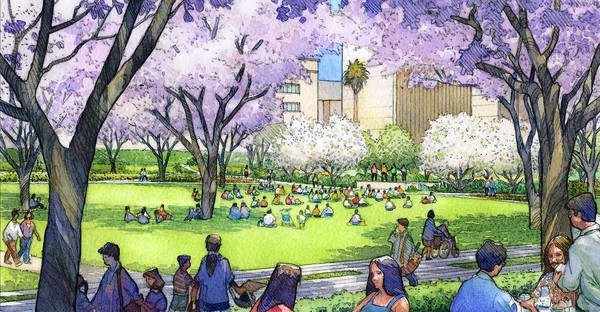 [Image by Douglas Jamieson / June 23, 2010]
[Image by Douglas Jamieson / June 23, 2010]
Having spent several years in the LA area, one of my proudest achievements was eventually being somewhat able to navigate the cluster f*ck of traffic and sprawl of its satellite cities. That's not to say I don't love LA, but the city is hard to define exactly where IT rests. After 5pm little (in LA standards) takes places minus the isolated events of Staples, small venue concerts like the Wiltern, or the Disney Concert Hall. The rest of the action is scattered about the 110, 5, and 405 in the towns of the likes of Hollywood, Santa Monica, Venice, etc.
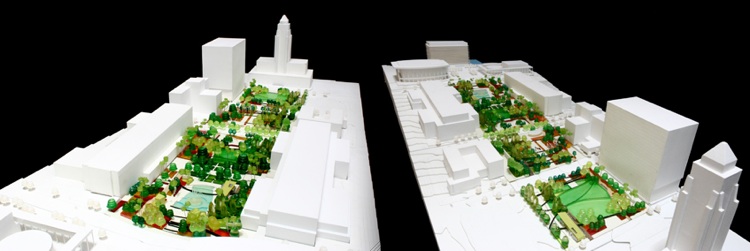 [Image via Rios Clementi Hale Studios]
[Image via Rios Clementi Hale Studios]
A quicker then the city could handle boom after WWII sent the city in a spiraling sprawl, and with the addition of poor planning left the city with essentially no core, no public transit, and no parks.
So it is encouraging to see such a focus of urban development taking place in what might the most challenging city to do it in, but I might also add with the most opportunity. We wrote last week about the Wilmington Park under construction, and this week highlight even a grander attempt at unifying the city core, the downtown Civic Park project.
A $56-million endeavor, Rios Clementi Hale Studios were given the task to bring life into the concept, which construction crews have begun working this week on the sloping site between the Music Center and City Hall. RCHS's theme was derived from the Goode homolosine projection, a cartographer's 1923 solution for showing the curved lines of the earth's surface on a flat space.
As Rios explains them, the paths, whose curving lines recall those of a Goode map of the globe, emerged from an effort to think broadly about the remarkably diverse population the park is meant to serve. (As he likes to point out, an astonishing 92 languages are spoken by students in the Los Angeles Unified School District.) As a design gesture, the new paths turn those ideas about Los Angeles and its role as a global city into an organizing principle, at least abstractly, for the park and how visitors will move through it. Rios and other designers in the firm also studied maps and diagrams showing plane trips across the globe as well as various car and sea routes.
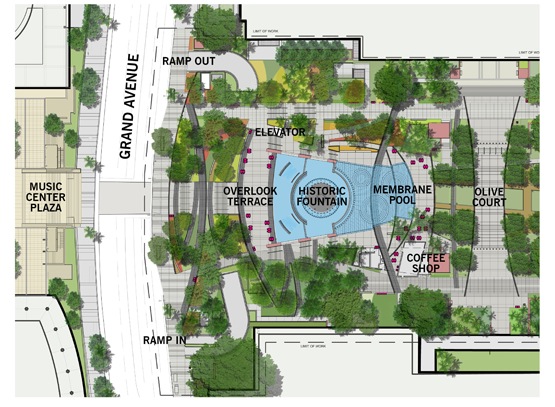 [Image via Rios Clementi Hale Studios]
[Image via Rios Clementi Hale Studios]
An exciting possibility of the park is in its potential partnership with the Music Center, which would take over management of the park, bringing possibly world-renown musicians to an open downtown forum.
Naturally it wouldn't be LA without the designers having to juggle different political and economic interests along with the dizzying array of parking garages and concrete ramps, but we're excited to see local firm taking on the challenge, and look forward to its hopeful fruition.
Built High, without the Line
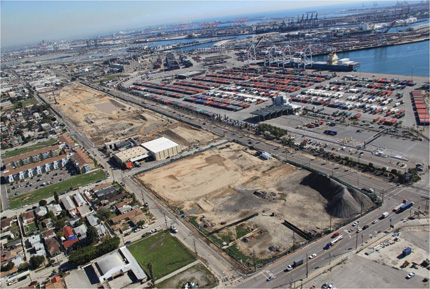 [Aerial view of the park in construction]
[Aerial view of the park in construction]
The High Line is cool, a representation of what is more to come in park development. It brought a lot of attention to landscape architecture which I like, but must every elevated project be referred to as the "High Line of the [fill in the geographic location]? Or for that matter parks of the west being referred to their eastern counter parts (i.e. The Great Park as the Central Park of the west).
Given the climate, far greater flora/fauna opportunities, and cities such as LA with a dearth of proper parks and integrated green infrastructure, I foresee the west becoming a hotbed of landscape architecture, in addition to the east of course.
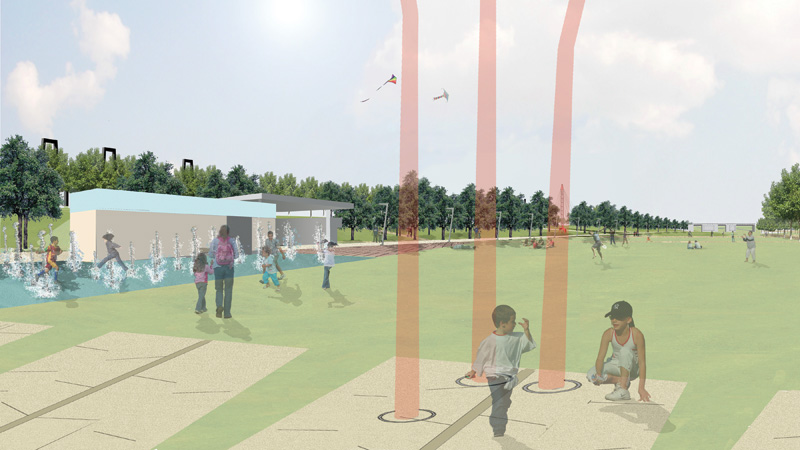 [Rendering of the "Great Lawn."
[Rendering of the "Great Lawn."
The port city of Wilmington’s version, for now known as the Harry Bridges Boulevard Buffer, neither extends along an abandoned railroad nor is it particularly narrow like New York’s prototype. Instead, it consists of a 30-acre, nine-block-wide stretch of sloping land that separates the busy Port of Wilmington from a residential neighborhood to the north. The $55 million project is well underway and set to be completed by next summer.
Designed by Sasaki Associates and under construction, the park forms a barrier from the port, established after public outcry from the port's extension, the original plan. HBBB get's its reference to the High Line from the elevated sound wall sloping the park to the east and separating it from the street. The park will include tree groves, open lawns, pavilions, fountains, and an amphitheater. To break up the mass and ease circulation, the berm will have several openings connected via pedestrian bridges. One bridge, a steel span structure designed by Arup, will be the centerpiece of the design.
